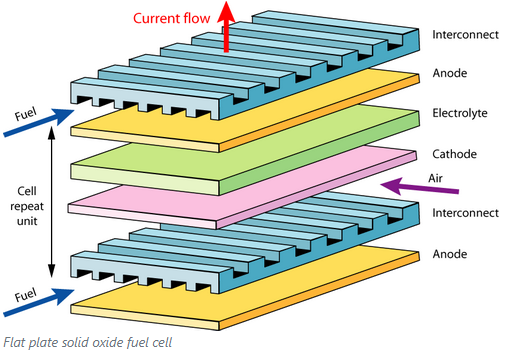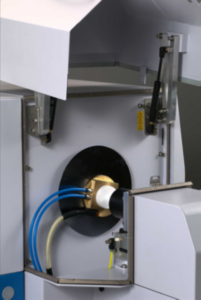
Introduction
Solid oxide fuel cells are based on the chemical oxidation of the fuel rather than its combustion and offers high efficiency without forming air pollutants. A unit cell typically provides a voltage of 0.7V, cells are therefore stacked (series connections) to provide useful voltages. Various geometries of cells do exist (planar & circular).

The operation temperature of the SOFC is usually high (over 1000°C), the materials in use (ceramic & ceramic coatings on metals) react under these severe conditions and lot of research is therefore needed where GDOES takes a role (ref 1,2,3). New types of cells operating at intermediate temperatures “IT SOFC” (225°C in ref 4 for instances) are also developed leading to new classes of materials to be investigated (Ref 5, 6).
Instrumentation
GDOES provides fast elemental depth profile of materials. Most materials in use being ceramics or ceramic coatings (non conductive) RF is of course mandatory.

Most of the published results obtained with GDOES are related to the interconnect materials (metals and coated metals) and were done on flat samples used in planar geometries. However some work to study Cr poisoning was also successfully done on porous ceramics with tubular geometries by using a dedicated source and small sample holder.
Learn More?
Please click on ‘Request Application Note’ and we will send you the full application note ‘Solid Oxide Fuel Cells (SOFC) analyzed with RF GDOES’.
